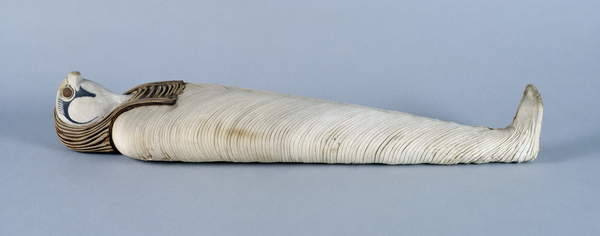Egypt came first, then history and civilization came. Egypt has one of the world's seven wonders of the pyramids. The Virgin Mary came to protect herself and her son. Egypt is the safest destination for tourism. My goal is to help foreigners learn my country’s history, come to Egypt, whatever your budget, and I will be your guide at no additional cost to you. booking with us. The goal is to service booking tours to Egypt. the best Nile cruise in Egypt. https://kingofegypttours.com
Thursday, 15 October 2020
Seated statue of Imhotep.
fl. c. 2650–2600 BC holding an open papyrus scroll (bronze). Architect and vizier of King Djoser, 3rd Dynasty, worshipped as the life-giving son of Ptah. Late Period, 26th Dynasty. c. 664-525 BC. Now at the Louvre Museum.
Diadem of Princess Sithathoriunet.
The diadem was made to be worn above the princess wig. It is made from gold, lapis lazuli, carnelian and glass paste. Princess Sithathoriunet was the daughter of Senusret II. This diadem was discovered in the Tomb of Sithathoriunet, Funerary Complex of Senusret II at El-Lahun.
The Middle Kingdom, 12th Dynasty, reign of Senusret II, ca. 1897-1878 BC. Now in the Egyptian Museum, Cairo.
Golden Shell of King Sekhemkhet.
This wonderful golden shell was found among other objects in the funerary complex of Sekhemkhet, the successor of King Djoser of the 3rd Dynasty.
It is a small container that was reproduced in the form of a seashell. It swings open on a tiny hinge and clasps shut by means of two small exterior hooks. It may have also been used to hang the shell from a chain as a pendant. Its function may have been as a receptacle for cosmetics and pigments.
Mummy of a Falcon.
Mummified animals were quite common in Egypt and included all sorts of animals and birds thought to represent various divinities.
The mummy of a falcon represents the god Horus. The falcon is wrapped in the shape of a human mummy. The head is covered with a falcon-shaped mask, which consists of several layers of linen with a thick coating of painted stucco.
The linen bandages intersect to form lozenge shapes. The mummy wears a wig and a pectoral, a large piece of jewellery that is worn on the chest. The inlaid eyes are painted in red.
Late Period, ca. 664-332 BC. Now in the Egyptian Museum, Cairo.
Spectacular find in the Saqqara cemetery: 59 intact sarcophagi.
The coffins belong to priests and notables of the Pharaoh society and have remained sealed and buried in a series of pits in the necropolis for 2,500 years.
Statue of Meryrahashetef.
A wooden statue of Meryrahashetef which has been carved from a single piece of ebony. He held the title of “Sole Companion”, “Keeper of the Palace Garden” and “Lector Priest”.
Found in the Tomb of Meryrahashetef, Sidmant, Faiyum. Ebony wood, H 58.1 cm. The old Kingdom, 6th Dynasty, ca. 2345-2278 BC. Now in the British Museum.
Tutankhamun’s Chair with Carved Back.
This wooden chair has a finely carved back. The back consists of a scene representing Heh, the god of a million years and eternity. Heh is always represented in a crouching position raising his hands to the sky.
On the sides, there are the Sema-Tawy, signs of unification. The chair is decorated from the top with the winged solar disk, the sign of Horus, the god of Edfu. The legs of the chair are in the shape of lion’s paws to give power to its owner.
GOOD MORNING FROM EGYPT EGYPT READY NOW مصر مستنياك
GOOD MORNING FROM EGYPT EGYPT READY NOW مصر مستنياك http://kingofegypttours.com/ Egipto te espera http://kingofegypttours.com/ Egypt is wa...

-
Cairo is fan-shaped, narrowest in the south, where the river valley is wedged between desert escarpments, and widest in the north, where t...
-
Abu Simbel, the site of the two temples built by the Egyptian king Ramses II (reigned 1279-13 BC), which is now located in Aswan Govern...
-
GOOD MORNING FROM EGYPT EGYPT READY NOW مصر مستنياك http://kingofegypttours.com/ Egipto te espera http://kingofegypttours.com/ Egypt is wa...























